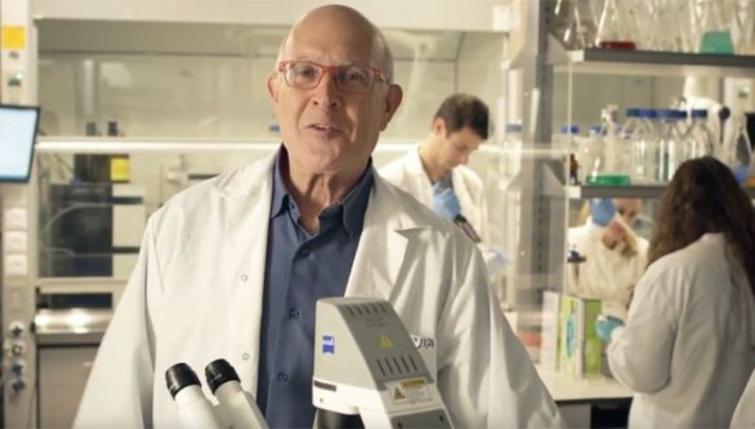
Israeli scientist claims COVID-19 vaccine is two-third ready
Jerusalem/IBNS: Giving a ray of hope to the world, an Israeli scientist has claimed that he is two-thirds into developing a vaccine for COVID-19.
The claim has been made by Jonathan Gershoni of Tel Aviv University's (TAU) School of Molecular Cell Biology and Biotechnology.
He told The Jerusalem Post that the work his laboratory is doing on the corona family of viruses is "two-thirds of the way" through the process of developing a vaccine for COVID-19.
Gershoni, who has studied the family of viruses for 15 years, told the newspaper that he was recently granted a patent by the United States Patent and Trademark Office for his vaccine design.
The Israeli scientist explained that the vaccine intends to target the virus's Receptor Binding Motif (RBM), a critical weak point which allows the virus to attach itself and infect a target cell.
According to the TAU website: "The United States Patent and Trademark Office (USPTO) has granted a patent to Tel Aviv University’s Prof. Jonathan Gershoni of the School of Molecular Cell Biology and Biotechnology at TAU’s George S. Wise Faculty of Life Sciences for his innovative vaccine design for the corona family of viruses."
The vaccine targets the novel coronavirus’s Achilles’ heel, its Receptor Binding Motif (RBM), a critical structure that enables the virus to bind to and infect a target cell, read the website.
According to Prof. Gershoni, the vaccine would reconstruct the coronavirus’s RBM, a tiny feature of its “spike” protein.
Though the virus uses many different proteins to replicate and invade cells, the “spike” protein is the major surface protein that it uses to bind to a receptor — another protein that acts like a doorway into a human cell.
.jpg)
After the spike protein binds to the human cell receptor, the viral membrane fuses with the human cell membrane, allowing the genome of the virus to enter human cells and begin infection.
“We have been working on coronaviruses for the last 15 years, developing a method of reconstructing and reconstituting the RBM feature of the spike protein in SARS CoV and subsequently in MERS CoV,” Gershoni was quoted as saying by TAU website.
“The moment the genome of the new virus was published in early January 2020, we began the process of reconstituting the RBM of SARS CoV2, the virus that causes COVID-19, and expect to have a reconstituted RBM of the new virus soon. This will be the basis for a new vaccine, which could be ready for use within a year to a year and a half.”
The spike protein is quite large, containing about 1,200 amino acids. Some researchers have limited their research to a region of the spike known as the receptor binding domain (RBD) that comprises some 200 amino acids.
However, the problem is that these relatively large areas have a variety of targets, and the immune system produces antibodies for all of them indiscriminately – reducing the effectiveness of a potential vaccine.
The RBM, a highly complex three dimensional structure, is only 50 amino acids long. Functionally reconstituting such a structure would be very challenging, but it would be an extremely effective basis of a vaccine, says Gershoni.
"The smaller the target and the focus of the attack, the greater the effectiveness of the vaccine," he added. "The virus takes far-reaching measures to hide its RBM from the human immune system, but the best way to 'win the war' is to develop a vaccine that specifically targets the virus’s RBM."
Gershoni’s team has completed their initial steps toward reconstituting the new SARS CoV2’s RBM. The reconstitution of the new SARS CoV2’s RBM and its use as a basis for a new vaccine is covered by an additional pending patent application, filed by Ramot, TAU’s technology transfer arm, to the USPTO.
“Now that we have received serum samples we should be able to isolate RBM-based vaccine candidates in the next month or two,” concludes Gershoni. “The discovery and production of a functional RBM for the new coronavirus is fundamental and critical for the production of the vaccine we propose."
Support Our Journalism
We cannot do without you.. your contribution supports unbiased journalism
IBNS is not driven by any ism- not wokeism, not racism, not skewed secularism, not hyper right-wing or left liberal ideals, nor by any hardline religious beliefs or hyper nationalism. We want to serve you good old objective news, as they are. We do not judge or preach. We let people decide for themselves. We only try to present factual and well-sourced news.







